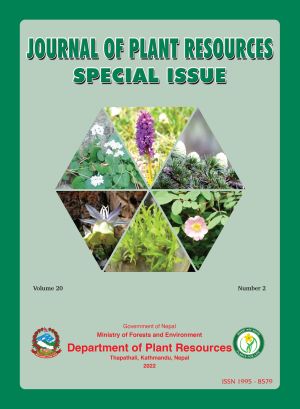Medicinal and Aromatic Plants of Makawanpur District, Central Nepal: Trade Scenario, Issues and Challenges
DOI:
https://doi.org/10.3126/bdpr.v20i2.57042Keywords:
MAPs cultivation, NTFPs, Production, Trade status, Value additionAbstract
Medicinal and aromatic plants (MAPs) are one of the most important components of non-timber forest products. This study aims to assess the collection, cultivation and harvesting, processing and trade scenario in Makawanpur district. Information gathered from the field visit to the study area, focus group discussion, key informant interviews and relevant literature were analyzed. In addition to the multiple subsistence uses of MAPs, some 30 species were also having trade value. Major MAPs species were collected from the wild whereas a few species like Asparagus, Cinnamomum, Myrsine, etc. were practiced for cultivation. Most of the MAPs were traded mainly to the Indian market without or just following a simple value addition. Except for Taxus and Berberis, none of the species was used for processing at the commercial level. The trade scenario showed a decreasing trend in both volume and value in the last few years. The unpredictable fluctuation in the market price of the products, the trader-controlled market and quality of the product, the weak bargaining power of the producer and disease and pest were found to be the major challenges faced by the local farmers.




